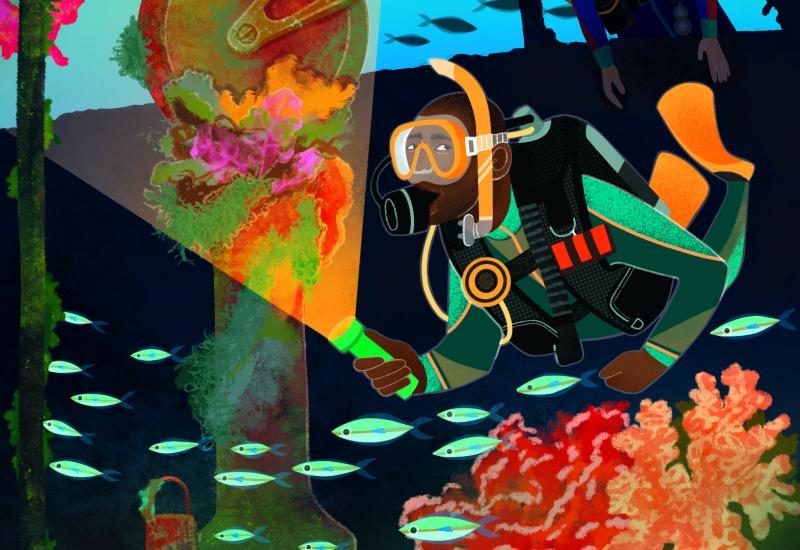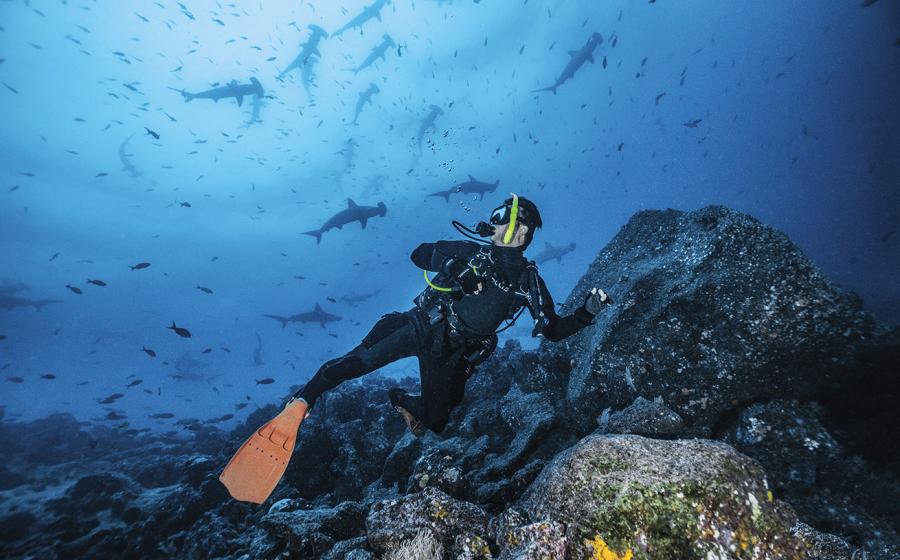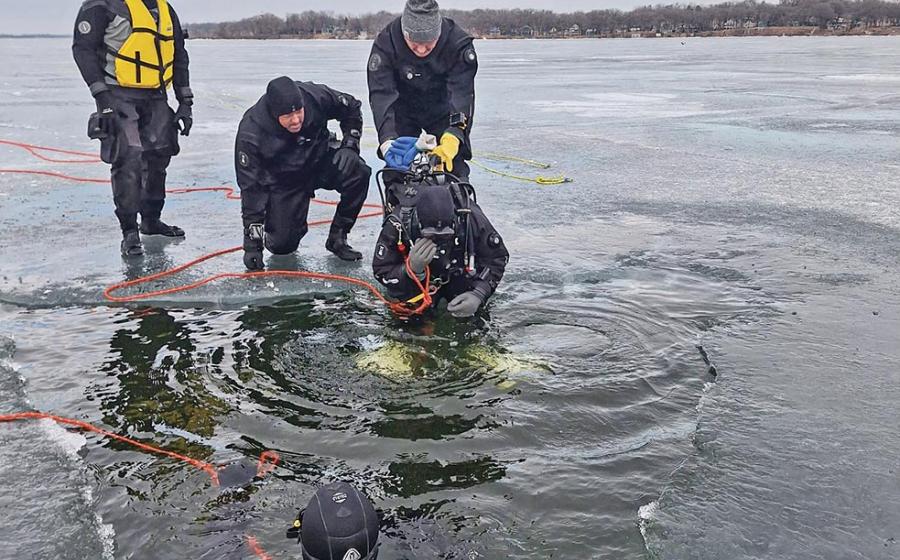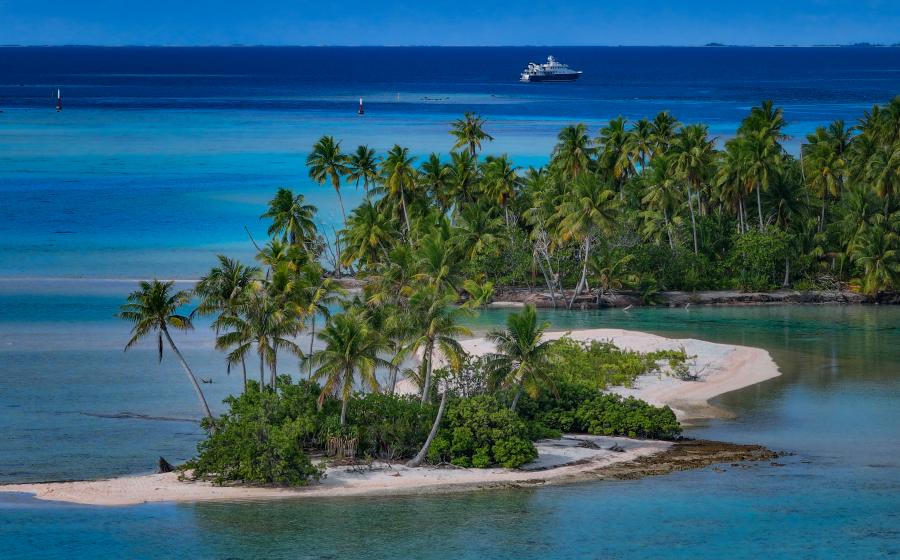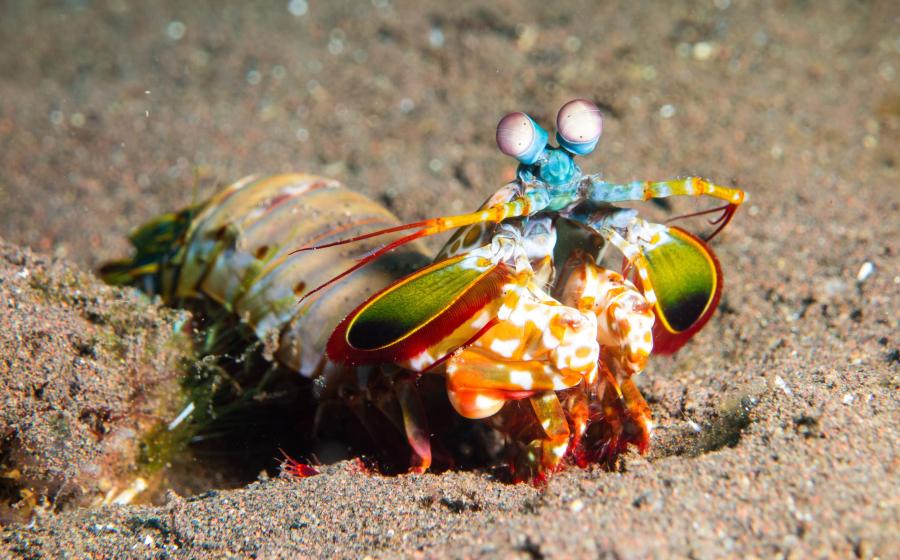Wild Kingdom: A Scuba Diving Adventure in Cuba's Gardens of the Queen
In a time not all that long ago, before cellphones, the Internet, video games or cable TV, I spent Sunday evenings watching Mutual of Omaha’s Wild Kingdom on NBC. The show transported me to African jungles and remote tropical islands, where wild animals roamed in their natural habitat.
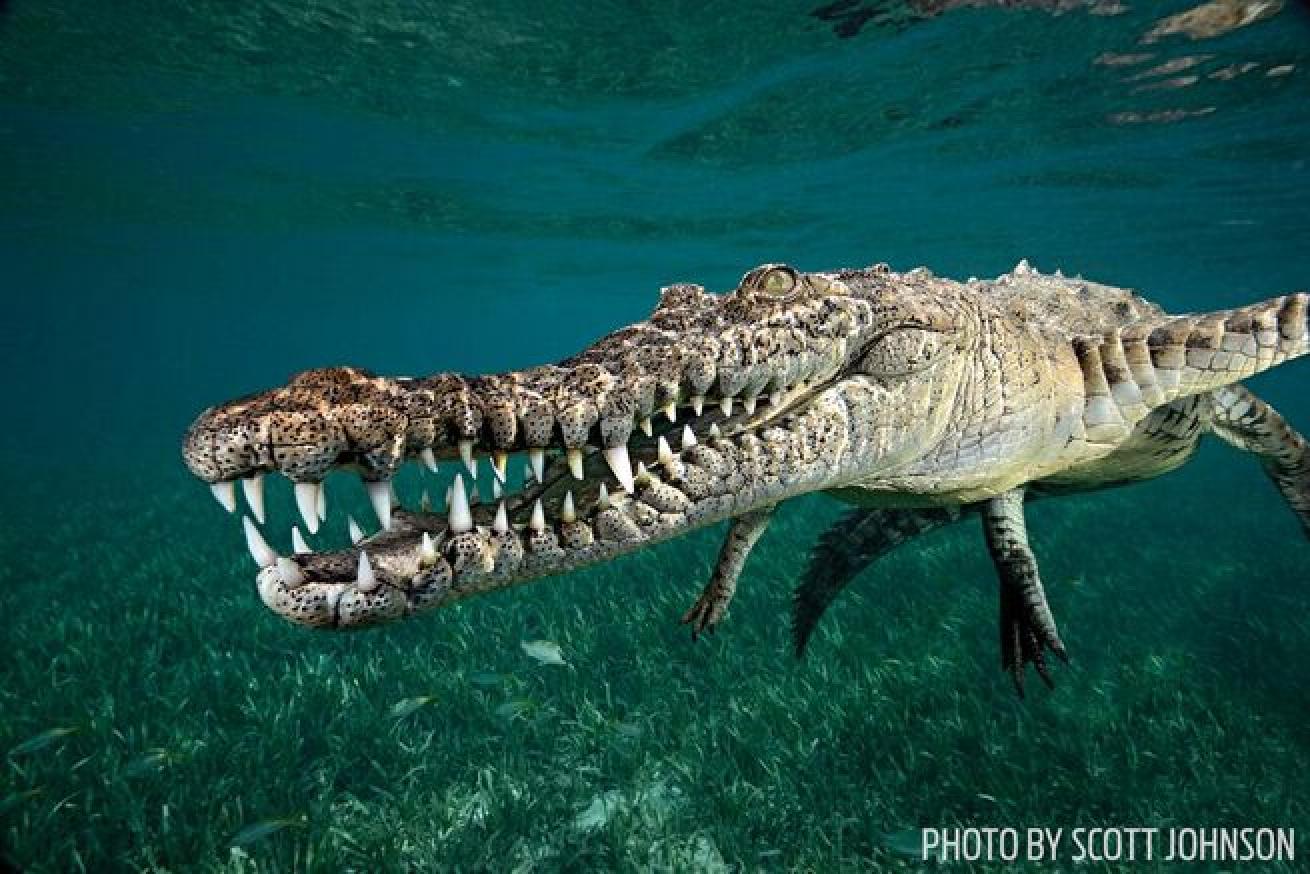
Photo by Scott JohnsonAn American saltwater crocodile smiles for the camera at La Boca de Piedra Chiquita.
Fast forward to my current surroundings in Cuba’s Jardines de la Reina, or Gardens of the Queen, where I’m staring into the half-opened right eye of a sleepy American saltwater crocodile, with only my housed camera and a thin sliver of water separating us.
I spotted this particular croc shortly after boarding Tortuga, a 110-foot double-decker houseboat. It was surfing the current near the bow of the boat, with its front two legs draped over one of the large mooring ropes. I marveled at the 10-foot croc’s proximity to the walkway railing and its ingenuity in using the rope as a comfy perch.
Related Reading: Dive Travel Guide: 38 Places to Dive in 2025
The next day, I asked my dive guides, Noel Lopez and Fausto de Nevi Herrera, if it was safe to get in with the croc. Lopez shrugged and said, “I don’t know. Nobody has tried it yet.”
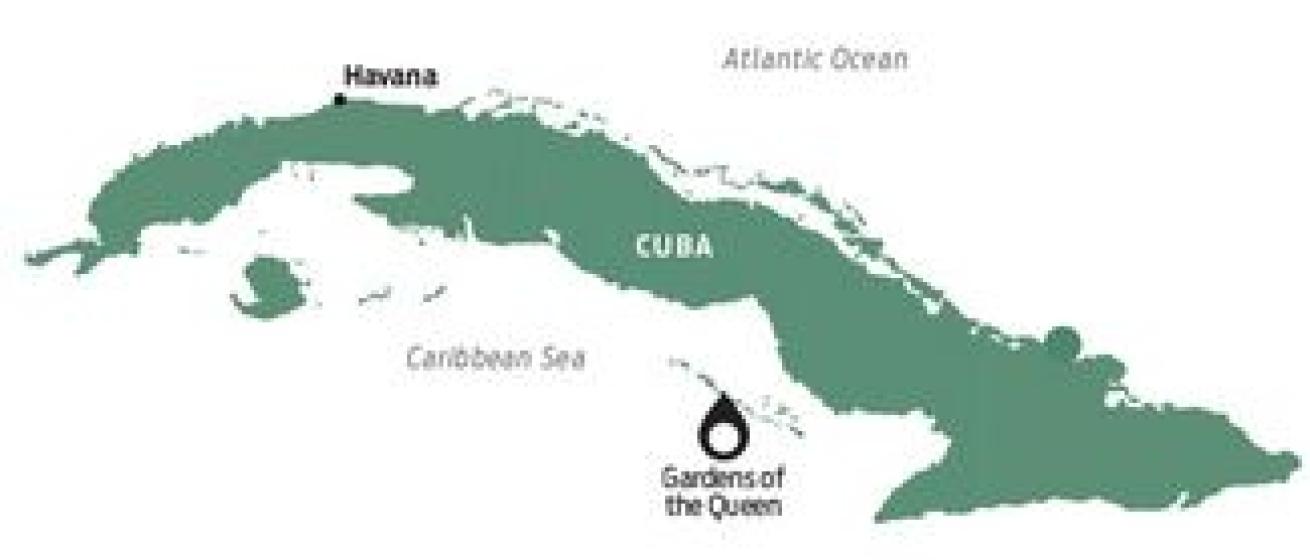
Sport Diver IllustrationThe Gardens of the Queen is located off Cuba's southern coast
Since then, I have invested numerous hours with the clever reptile, hoping we will become acclimated to each other. Some encounters yielded decent shots as we cautiously inspected each other. Others were uneventful as the croc swayed atop the mooring rope and simply ignored me. A few ended quickly after the croc opened its mouth, charged and then rammed into my dome port. Overall, the visits have become increasingly more positive and productive, if not predictable.
Lying on the sand beneath Tortuga, the croc closes its right eye and goes back to sleep. I carefully reach around my camera housing to gently run my left hand over its armored skin and think about all those times I watched Marlin Perkins doing something similar on Wild Kingdom. I slowly back away and then swim to the stern of Tortuga to get ready for the next dive.
Cuba, an archipelago of more than 4,100 islands, islets and keys, is located only 94 miles south of the Florida Keys. The 45-minute flight from Miami to Havana opens a door to a civilization stuck somewhere between Cold War-era glory and 21st-century resource deficits. In many ways, modern-day Cubans maintain relatively simple lifestyles that are similar to those their American counterparts lived back in the 1960s and ’70s, when Wild Kingdom’s Perkins entertained them on Sunday evenings. Warming relations between the United States and Cuba have American tourists hungering to ride in the famous Yank tanks — Ford Model Ts, Studebakers and 1950 Chevys, to name a few — plying the streets of Old Havana, and divers from the United States are learning about one of the Caribbean’s most successful no-take marine parks.

Photo by Greg LecoeurA shark cruises the reef in the Gardens of the Queen off Cuba
That’S Amore
Two passionate Italians, explorer Christopher Columbus and entrepreneur Giuseppe “Pepe” Omegna, helped put Cuba’s marine habitats on the map. In 1494, Columbus was so impressed by the uninhabited islands, verdant mangroves and vast coral gardens 50 miles off the southern coast of Cuba’s main island that he proclaimed them Gardens of the Queen in honor of his patron, Queen Isabella I of Spain.
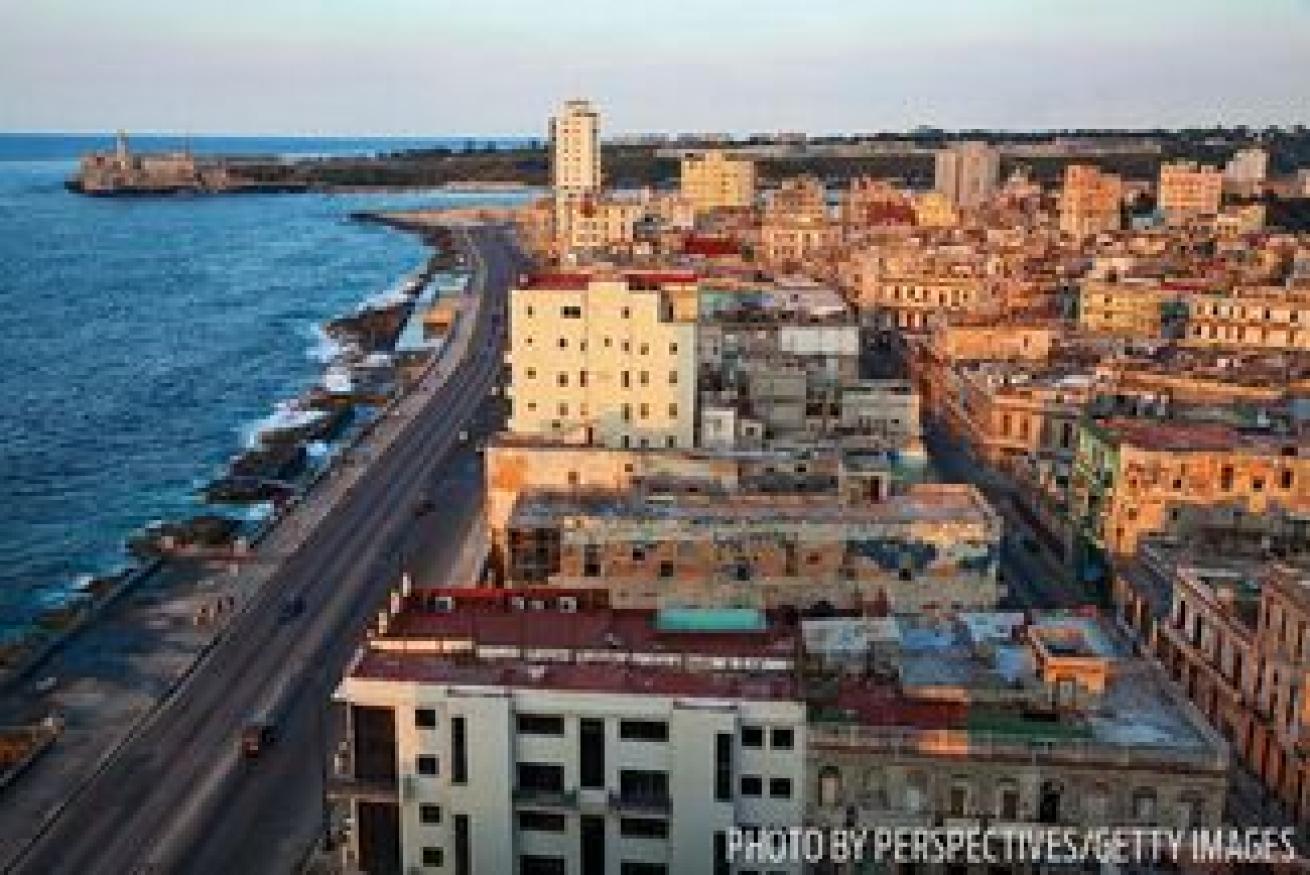
Perspectives/Getty ImagesAn aerial view of Havana, Cuba
Then, in 1996, Omegna approached Cuba’s Ministry of Fisheries director, Dr. Julio A. Baisre, with the idea for a marine reserve in the heart of Gardens of the Queen. The concept appealed to many, though none more important than Fidel Castro, the country’s president and an avid fisherman and scuba diver. In almost no time, it was declared a no-take national marine park, and the process of converting reluctant local fishermen to park patrol, guides and boat crew was underway. Omegna was rewarded with an exclusive operator’s license in the 837-square-mile MPA, and now his Avalon Cuban Fishing Centers and Avalon Cuban Diving Centers serve up to 500 catch-and-release fishermen and 1,000 divers per year, respectively.
Protected areas are of little value without significant, ongoing enforcement. The Cuban government created a sustainable model; over the past 20 years, the MPA has yielded a 35 to 40 percent increase in fish stocks and a spillover effect of 20 percent hikes in adjoining waters. The enforced conservation protects the vibrant coral reefs, mangrove forests and sea-grass beds that maintain the MPA’s rich biodiversity and healthy ecosystem.
Tonic Immobility
Although poachers and commercial development have endangered saltwater crocodiles throughout their range, longline fishing has equally devastated silky shark populations. Rumors of healthy crocodiles and silky sharks off Cuba are what initially prompted me to contact Avalon. Luisa Sacerdote, Avalon’s diving department manager, patiently answered my questions and then filled me in on the U.S. embargo-restricted options for legally traveling to Cuba.
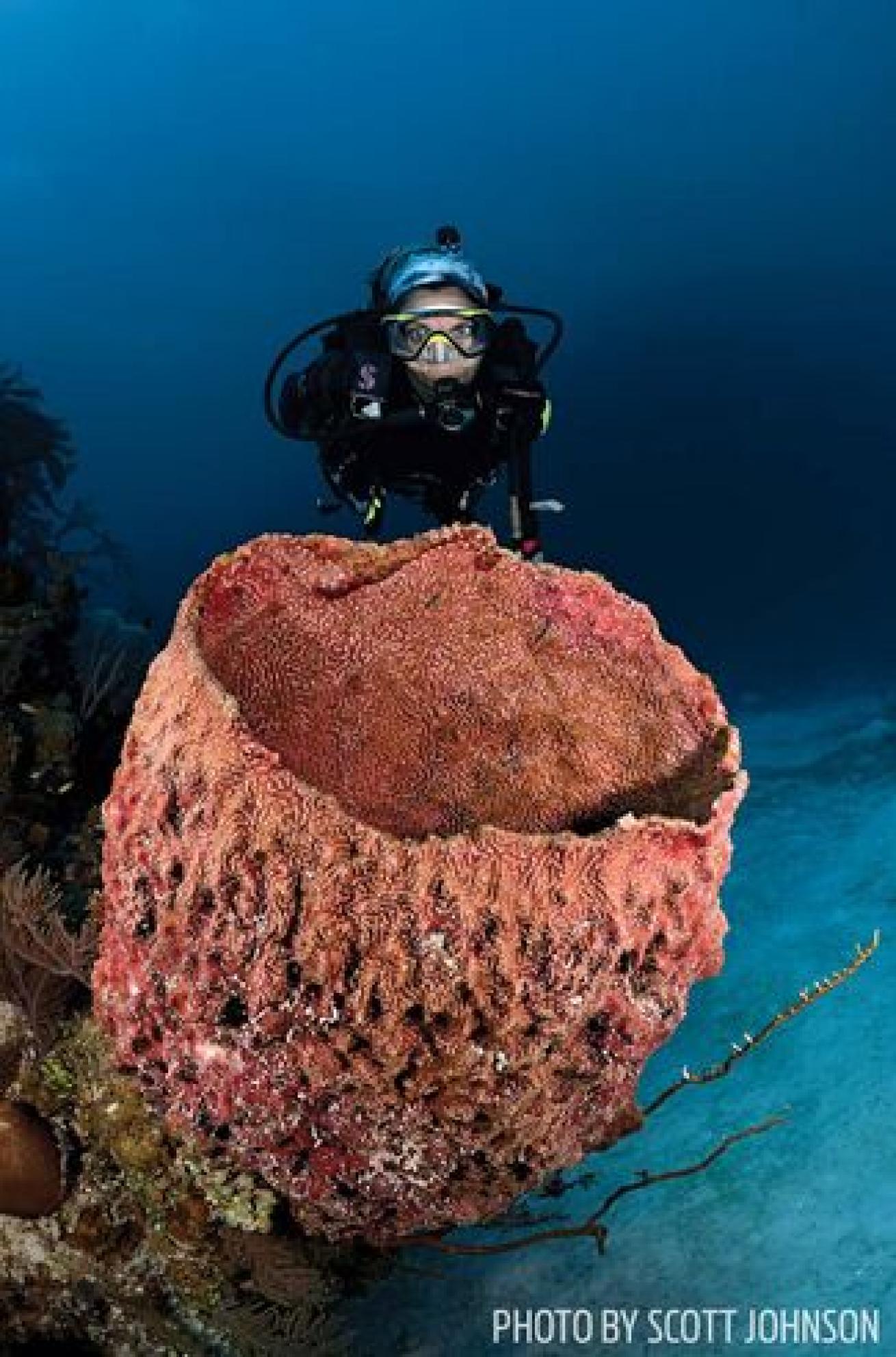
Photo by Scott JohnsonA huge barrel sponge at the Five Seas wreck off Cuba
When I ask Herrera when we can try for the silkies, he says, “Now and later. We always find them at Farallon, Pipín and Vicente. Sometimes there are 10. Sometimes there are 20. If there are no tuna to chase, more of the sharks hang out with us. I will show you how we put tags on them.”
True to his word, Herrera has us in a skiff and on our way to Farallon in no time. When we arrive, he lowers a small bait box to a depth of 25 feet and then secures it to the skiff. “We use the bait on shark and goliath grouper dives so divers can take pictures,” says Herrera. “The box contains fish scraps, and water flows through the holes to keep the fish interested.”
As if on cue, multiple sleek bronze shapes appear just below the surface before we even step foot off the skiff. I am so excited, I almost back roll without my fins. Herrera, Lauren Johnson (my wife and model) and I spend the next 70 minutes in 30 feet of water with more than 15 silkies. The inquisitive sharks show no signs of aggression, disease or malnutrition, but they often approach so close that a collision seems inevitable. Herrera motions and then grabs and twists the upper lobe of a 7-footer’s caudal fin. The shark almost immediately goes still and rests upside down with Herrera’s left hand still holding its caudal fin and his right supporting its dorsal fin. This impressive display of tonic immobility demonstrates how satellite tags are attached without risk or undue stress to either the diver or shark.
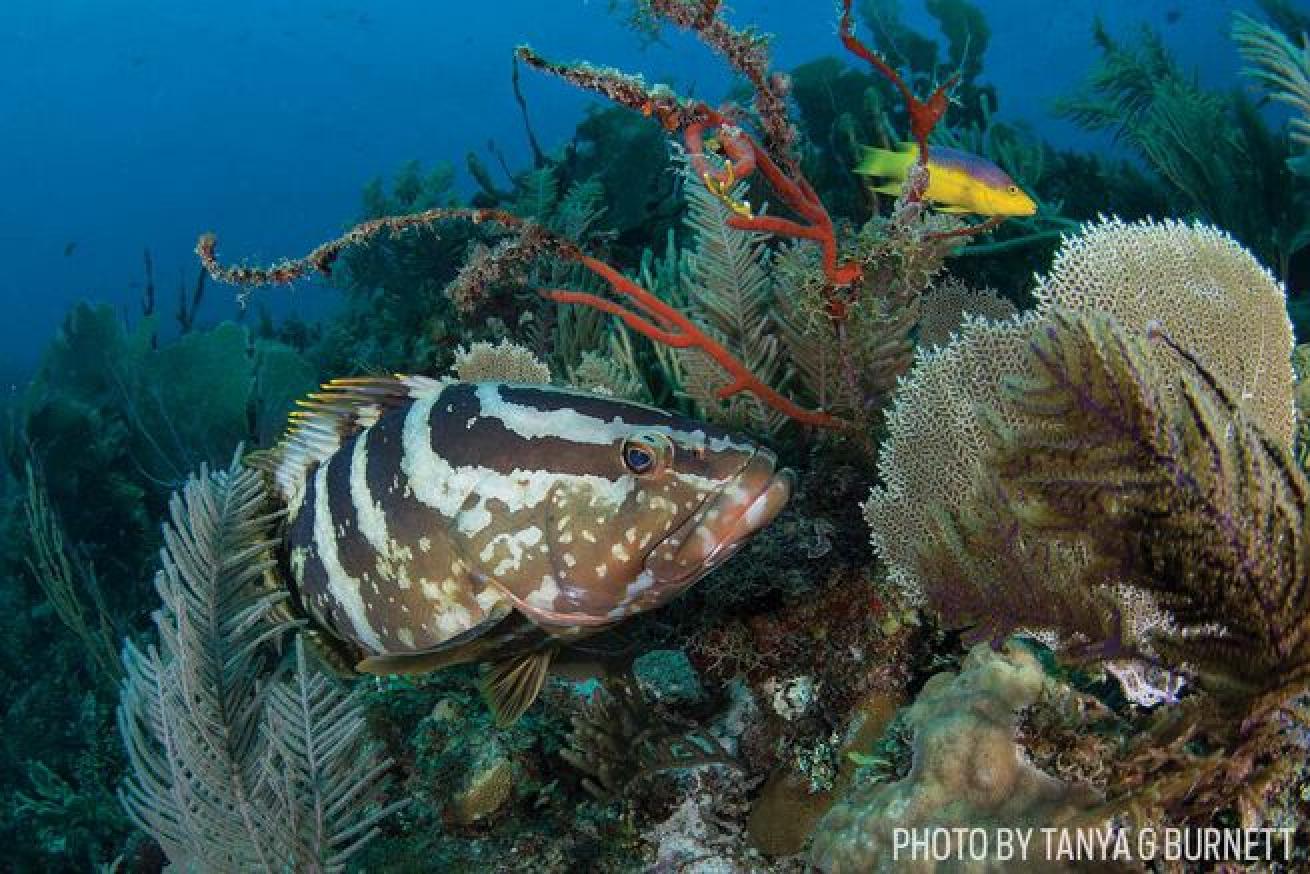
Photo by Tanya G. BurnettA Nassau grouper in the waters off Cuba
SAM-I-AM
“How cute! He is adorable!” squeals Lauren after our dive at Black Coral 2.
OK, I admit it, Sam the nurse shark is pretty freakin’ cute. Herrera just smiles, shakes his head and says, “Sam is too smart for his own good.”
We had planned a shark shoot at Black Coral 2. Herrera placed the bait box under a sponge, and Lauren posed against the blue sun-dappled water. All we needed to complete the composition were the sharks. Just when we started to roll, with a conga line of sharks finding the sweet spot within my viewfinder, along came Sam, and within minutes, all hell broke loose.
Herrera warned us about Sam before the dive. “A 5-foot nurse shark we call Sam is probably going to show up shortly after I hide the box. He knows how to slide the upper panel open and get to the bait, so I have to lay the box upside down to make sure it stays closed.”
At first, Sam is content wedging himself between the sponge and box, but soon he begins to lift the box with his rostrum. I fire off a few shots and then turn back to see the box on its side and Sam working on the exposed upper panel. He opens the box and then executes a slick hit and gulp. The Caribbean reefs converge on the box, knock it to the ground and then detonate the surrounding sand. The resulting shaken-snow-globe visibility ends the shoot.
Blacktips, Caribbean reefs, great hammerheads, lemons, nurses and silkies are MPA regulars. The smartest of the lot is the shark that embodies the personality of Dr. Seuss’ main protagonist in Green Eggs and Ham, Sam-I-Am.
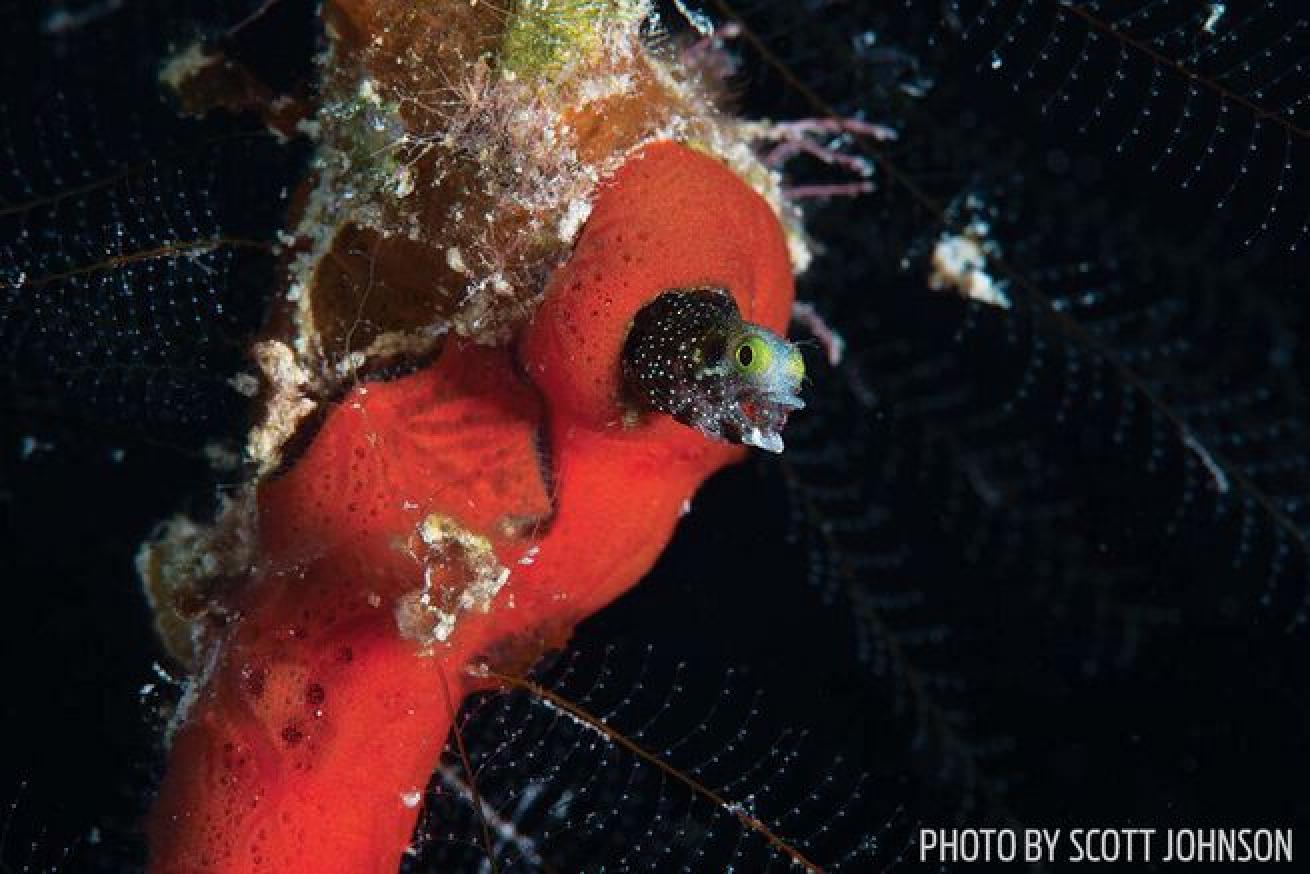
Photo by Scott JohnsonA spinyhead blenny in its orange sponge home at Los Mogotes
It’S A Small World Too
I love big animals, but I also love small animals. Lopez, a published underwater photographer, has worked in the MPA since its inception. Prior to our trip, I ask him if he knows of any good spots to photograph yellowhead jawfish. He said he wasn’t sure but that he would be on the lookout for them. When we finally reach Tortuga, Lopez greets us with, “I just found the jawfish at two sites, and four or five have cheeks swollen with eggs!”
He and I each have a mouth-brooding male to ourselves at Octopus Cave. While I rely on fast shutter speeds and strobe light to capture the dad aerating the eggs by spitting them out and then instantly sucking them back into his mouth, Lopez simply puts his palm-sized video camera on a tripod, places it in front of the jawfish’s burrow and then swims away. He beams like a kid on Christmas morning as he shows everyone his footage after dinner. Lopez explains, “For many years I only focused on the big animals, but now, I like shooting the small stuff, such as spinyhead blennies, arrow blennies and jawfish.”
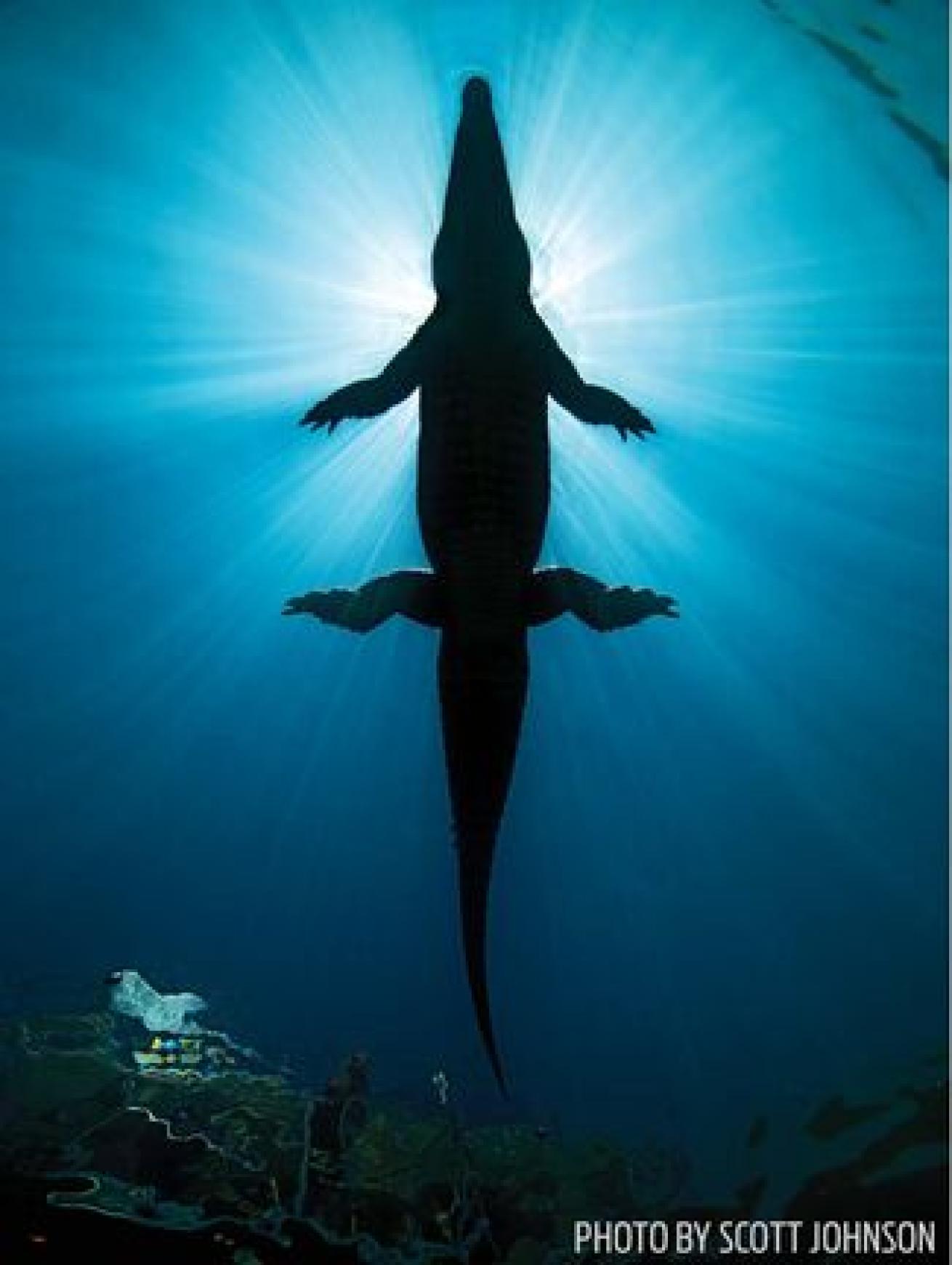
Photo by Scott JohnsonA 10-foot American saltwater crocodile rests motionless near the surface in Nicola Channel
Not Gonna Do It
The Wild Kingdom motif also applies to the crazy lineup of off-gassing activities. You can snorkel with 5- to 7-foot crocs at La Boca de Piedra Chiquita, snorkel in the mangroves to look for seahorses and shortnose batfish, cruise the shallow channels to count eagle rays (we find 13 in less than 3 feet of water) and lemon sharks or visit the Menagerie to feed the resident Desmarest’s hutias, Cuban iguanas and hermit crabs.
Lauren has been a trooper over the years. She has waded through Amazon swamps and braved scorching desert sands in the Middle East in the line of duty. But sometimes, she puts her foot down and says, “Not gonna do it!” Lauren said that twice after I mentioned the croc snorkeling and hutia feeding.
After watching me interact with the croc I named Goosto at Tortuga, and then with the smaller crocs I refer to as kindergartners at La Boca de Piedra Chiquita, Lauren said she might not be too scared to get in with one of the kindergartners.
On our next visit to La Boca de Piedra Chiquita, she conquers her reptilian fears without any prompting from me and slides into the water for a series of shots with an energetic 6-footer. Then, during our first visit to the Menagerie, she laughs as jumping Cuban iguanas deftly snatch the offered fruit and sighs as a chubby hutia holds her hand while it casually chews on some bread. If you ask her today what she enjoyed most about the MPA, the Menagerie and Sam-I-Am are near the top of her long list.
Related Reading: How to Succeed As a Scuba Instructor
Wild Kingdom Of The Future
Diving in Gardens of the Queen is unlike anything else I have witnessed in almost 30 years of exploring destinations around the world. It has something special for just about every diver. Rumor has it Avalon will be investigating new dive sites in the Zapata National Park in 2016. If so, Cuba and Avalon might have another fascinating MPA to offer divers in the near future.
Topside fun in Cuba
Hemingway’S Hangouts
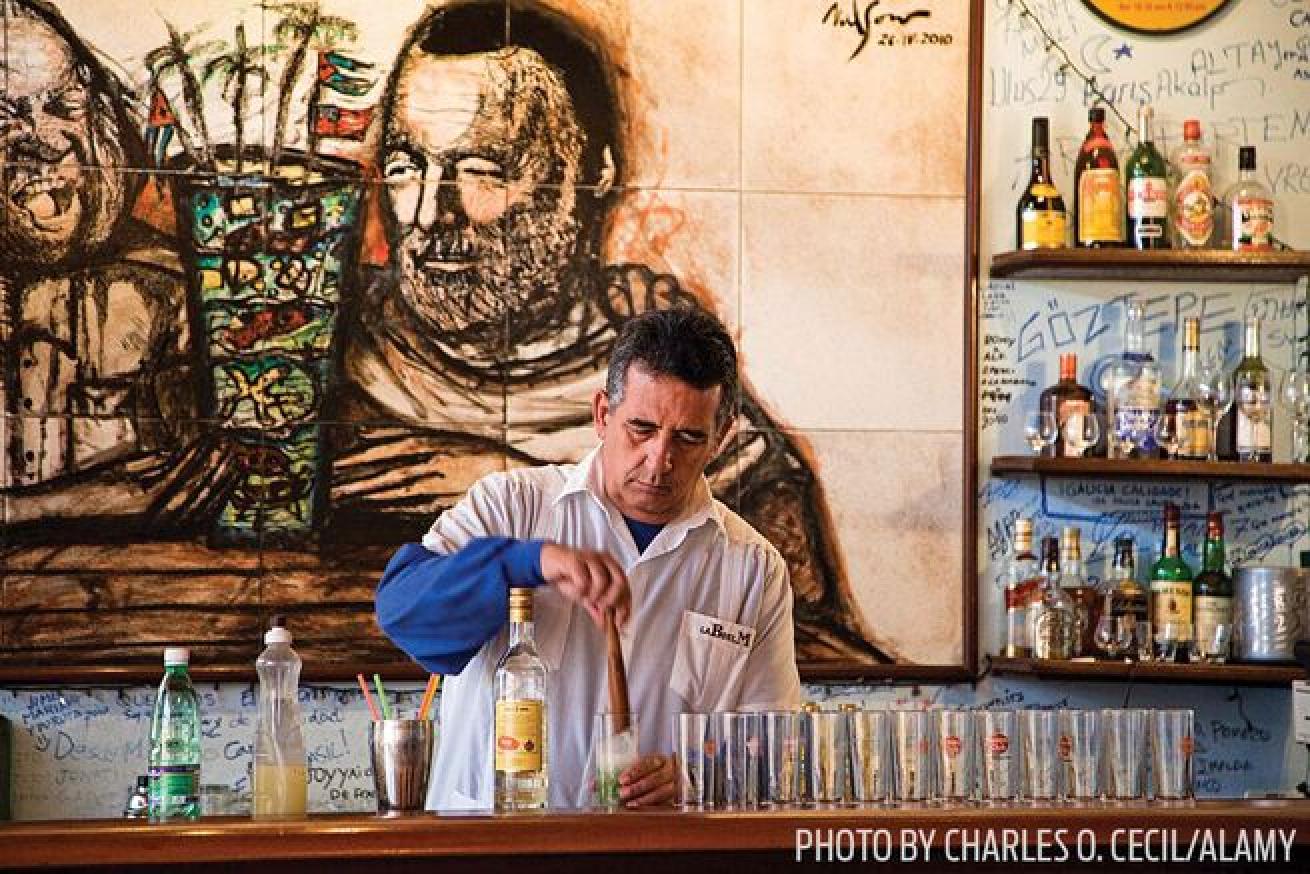
Photo by Charles O. Cecil/AlamyA bartender at work at La Bodeguita del Medio in Havana, Cuba
Ernest Hemingway spent much of his adult life in Havana and remains a revered figure to many Cubans. Tours are readily available via Havana hotels that will allow you to walk in Hemingway’s footsteps for part of a day. You can visit one of Hemingway’s favorite mojito watering holes, La Bodeguita del Medio, near Old Havana’s Plaza de la Catedral and then walk to the Ambos Mundos Hotel to explore Room 511, where Hemingway frequently stayed between visits to the United States. Short bus rides take you to Finca Vigía (Lookout Farm), the estate he purchased in 1940 and the place where he wrote two of his most famous novels — For Whom the Bell Tolls and The Old Man and the Sea — and then Cojimar, a small fishing village where Hemingway often went fishing aboard his boat, El Pilar, and which served as the inspiration for The Old Man and the Sea.
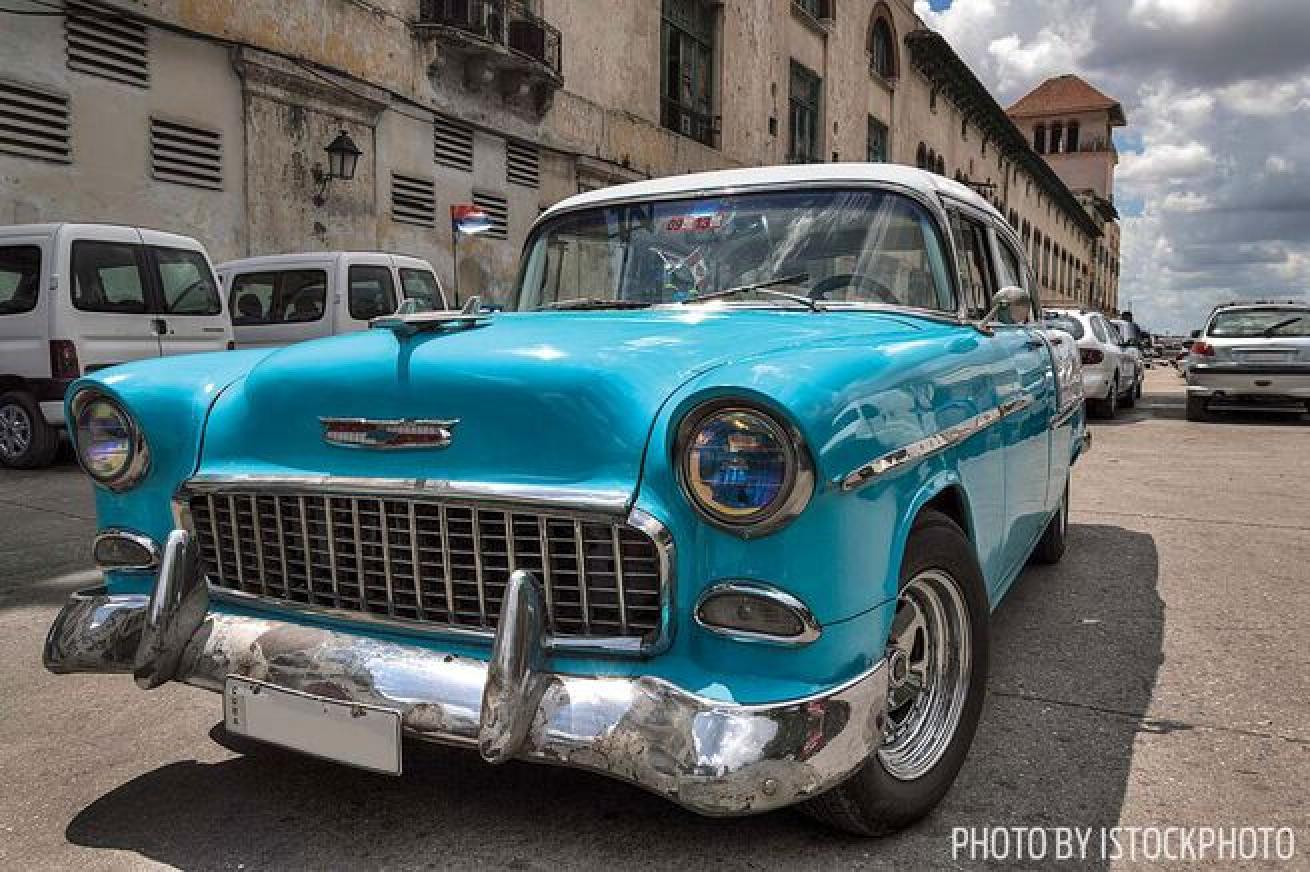
iStock PhotoA vintage car near Havana Bay
Yank Tanks, Rum And Cigars
Yank tanks, rum and cigars are synonymous with Old Havana’s glory days. Yank tanks are the bigger-than-life 1940s, 1950s and 1960s American automobiles that stylishly ramble along the streets of Old Havana and typically serve as readily available taxis. Take a Yank tank to any bar or just about any store and you will be faced with your choice of Cuban rum and Cuban cigars, both of which are highly prized Cuban exports. A visit to the Havana Club Museum of Rum in Old Havana reveals the history of Cuba’s signature beverage.
Diving Options
Avalon Cuban Diving Centers offers guests a wide variety of accommodations, such as the liveaboards Avalon 1, Avalon II and Georgiana, and the floating hotel Tortuga. Aggressor Fleet's new Jardines Aggressor began operation in April. U.S. citizens can book charters on Jardines Aggressor through the Oceans for Youth Foundation’s People-to-People educational program.
Check out these don't-miss dives off the coast of Cuba




